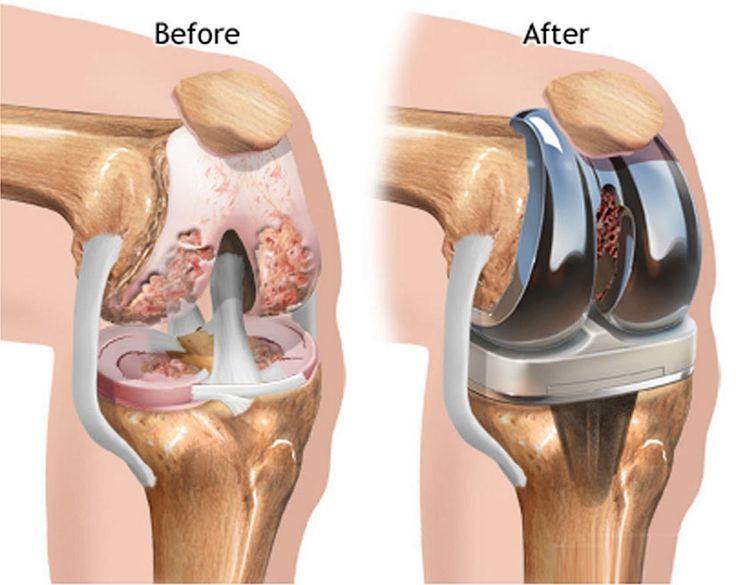Knee Replacement Surgery in Hyderabad
Robotic Knee Replacement | ACL Reconstruction | Arthritis Care | Malakpet
If knee pain is affecting your mobility, sleep, work, or daily lifestyle, you’ve reached the right place. Dr. Praful’s Orthopedic Clinic provides advanced knee pain and knee replacement treatments from an experienced knee specialist in Hyderabad.
Led by Dr. Praful Kilaru, a highly trained orthopedic surgeon with 17+ years of experience, our clinic offers world-class diagnosis, modern surgical techniques, and personalized recovery
What Is Knee Replacement Surgery?

Knee Replacement (also called Knee Arthroplasty) is a surgical procedure where the damaged parts of the knee joint are replaced with high-quality artificial implants. These implants function like a natural knee joint, allowing you to walk, climb stairs, bend, and perform daily activities without pain.
Knee replacement is recommended when:
- Knee pain is severe and persistent
- Mobility decreases
- Medication and physiotherapy don’t help
- Joint deformity becomes visible
- Arthritis has worn out the knee completely
At our clinic, each surgery is customized based on the patient’s age, health condition, knee structure, and lifestyle.
Top Knee Replacement Surgery in Hyderabad
Dr. Praful Kilaru is a renowned Orthopedic Surgeon and Joint Replacement Specialist in Hyderabad, heading Dr. Praful’s Orthopedic Clinic, located in Malakpet. With over 17 years of experience in orthopedics, trauma care, and sports medicine, Dr. Kilaru is recognized for his precision, advanced surgical methods, and compassionate patient care.
At his clinic, Dr. Kilaru combines AI-assisted diagnostic tools and robotic surgery techniques to ensure superior accuracy and faster recovery for patients. He specializes in knee and hip replacements, fracture fixations, ligament reconstructions, and trauma management, offering end-to-end orthopedic care under one roof.
Dr. Kilaru is fluent in Telugu, Kannada, English, and Hindi, making communication seamless for patients from diverse backgrounds.

| Year | Experience Details |
|---|---|
| Current | Currently working as a Senior Orthopedic Consultant, Yashoda Hospitals, Malakpet |
| 2022 – 2024 | Senior Orthopaedic Consultant, Citizen American Oncology Institute & Hospital, Hyderabad |
| 2018 – 2022 | Head of Department of Trauma, Sunshine Hospital, Hyderabad |
| 2014 – 2018 | Senior Trauma and Joint Replacement Consultant, Sunshine Hospital, Hyderabad |
| 2013 – 2014 | Junior Consultant, Department of Arthroplasty & Orthopaedic Trauma, Sunshine Hospital, Hyderabad |
| 2011 – 2013 | Registrar, Department of Arthroplasty & Trauma, Sunshine Hospital, Hyderabad |
Types of arthritis that cause knee replacement surgery.
- Osteoarthritis – Osteoarthritis breaks down the cartilage and the bone in the knees causing severe trauma and pain. It usually affects middle aged or elderly people.
- Rheumatoid arthritis – Rheumatoid arthritis causes inflammation which results in stiffness and pain in the knees.
- Post- Traumatic arthritis – It is caused by severe injuries to your joint that can damage the cartilage which results in stiffness and pain in the knee joints.
Anatomy of the knee
Understanding the structure of the knee is extremely important in order to familiarize yourself with the knee replacement surgery. A joint is where two bones meet or connect that allows easy mobility and movement. Similarly, a knee which consists of 2 leg bones is adhered together with ligaments, muscles and joints. Cartilage acts as a safety protection for the knee preventing it from injuries and damage while tendons and ligaments are connective tissues that join the muscles to bones. The knee basically consists of –
- Femur (thigh bone)
- Tibia (shin bone)
- Patella (kneecap)
Ideal candidates for knee replacement surgery?
- People with stiff knees.
- People with knees that have excessive swelling.
- People experiencing pain while walking, moving or performing any physical movements.
- People with extremely damaged knee joints or bones.
- People who are unaffected by medications or therapies.
At initial consultation
Instructions before surgery.
- A full physical examination will be conducted by the surgeon to ensure complete safety.
- You will be given antibiotics or sedatives before the surgery.
- In some cases, a nerve block will be placed around your knee to numb it during the procedure.
- You will be required to pre-plan and schedule your work for 2-3 weeks in advance as complete bed rest would be advised.
Procedure
Step 1 – General anesthesia will be given to the patient.
Step 2 – An incision will be made in the knee and the patella and tibia are adjusted accordingly.
Step 3 – The damaged surfaces of the knee will be removed cautiously.
Step 4 – Knee prosthetics or joints will be attached in the same area.
The prosthetics will be placed with the help of surgical cement.
Step 5 – The incision will carefully be closed with sutures, stitches or surgical staples accordingly.
Step 6 – A bandage or surgical or dressing will be applied to the area to prevent infections.
Instructions after surgery
- You will straight up be taken to the recovery room and kept under observation for 1-2 hours after which, you will have to remain admitted in the hospital for the time indicated by the doctor.
- Regular physical movement of your legs and ankles will be conducted to order blood clots or swelling.
- Medication will be prescribed by the doctor and will have to be taken accordingly.
- Warmup exercise and breathing exercises will be suggested by the doctor.
- After discharge, you will have to maintain proper hygiene near the surgical area to avoid infections.
- You will be asked to keep your leg elevated to avoid swelling.
- Aspirin or anti-inflammatory medicines should not be taken as it has the potential to increase bleeding.
Side effects of the knee replacement surgery
Some of the potential risks of the surgery include –
- Infection
- Blood clots
- Bleeding
- Nerve damage
- Possibility of strokes or heart attacks in the elderly.
